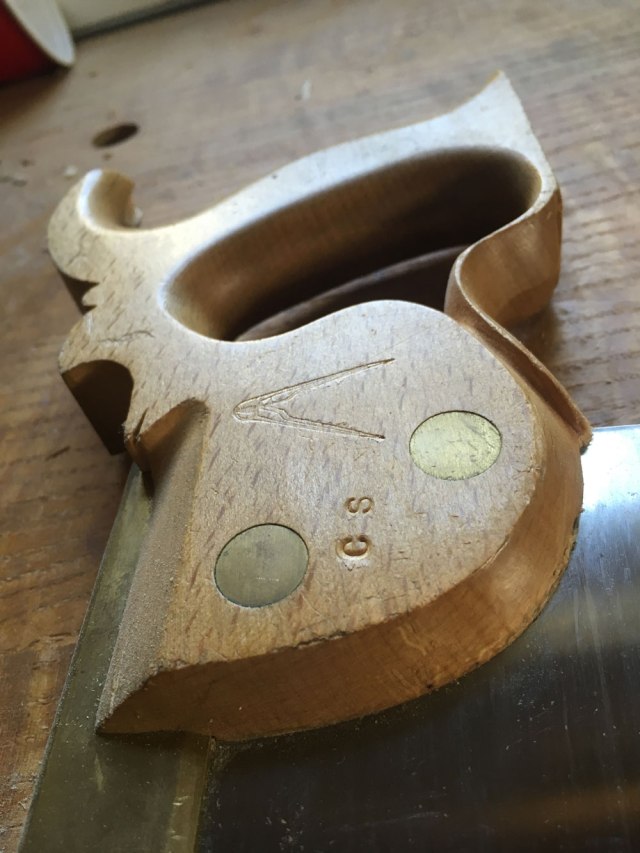
Though my days of teaching woodworking might be over, the process has left its mark on the tools I use. During the last 10 years, I made changes to my tool set to make it less intimidating to my students.
I gave my Eccentric Toolworks saws to a friend. I mothballed my Seaton saws from Mike Wenzloff. They were all fantastic tools that were made by people who I am proud to support. But they are unobtainable today. And I don’t want students to think there is anything magic about tools. The magic is in your fingers.
So here are the tools I use now. Only one is exotic. So let’s get that one out of the way immediately.
My tenon saw is a Wenzloff & Sons tool that was copied from the Benjamin Seaton tool chest. This saw was one of the first saws that Mike Wenzloff ever made – before he really decided to become a full-time sawmaker. It’s unsigned. It’s handle is polished and worn to fit my hands. I can no sooner get rid of this saw than sell a child. It’s sharpened rip at 10 ppi with just a bit of fleam.
My carcase saw is a vintage Wheeler, Madden & Clemson that I’ve owned forever. It’s sharpened crosscut at 14 ppi.
My dovetail saw is a Lie-Nielsen with an apple handle. Thomas Lie-Nielsen got his hands on a few chunks of apple and made this handle for me in exchange for a piece of furniture. While there are lots of good dovetail saws out there, it’s hard to beat the Lie-Nielsen. When I started woodworking they were made by Independence Tools (run by Pete Taran and Patrick Leach) and seemed exorbitantly priced at $125. Now the $125 seems the best bargain out there in saws (and I can’t believe it’s still $125).
The flush-cut saw in my chest is the Veritas one with the black plastic handle. I used to have the Veritas one with the bubinga handle, but after kinking its blade I went to order a new one and Lee Valley was out of stock of the bubinga saw. Hence the plastic one.
The saws I use for breaking down stock are vintage panel saws that Matt Cianci restored. I have a Disston panel saw that is sharpened crosscut at 8 ppi and a Spear & Jackson panel saw that is sharpened rip at 7 ppi.
And I would be remiss if I didn’t mention my Stanley Sharptooth saw that I use for breaking down rough stock. It lives in my truck, not my tool chest, but has been an important part of every project during the last five years. I want to hate the $10, plastic-handled (but made in the USA) thing. But that would be disingenuous.
Speaking of saws that don’t live in the chest, I have a vintage Langdon miter box below my bench that I use for precision crosscuts and miters. The original sawblade was trashed, so I replaced it with a Lie-Nielsen miter box saw.
A lot of people ask me about the Veritas saws with composite spines and wooden handles. Why don’t I use those? They are excellent saws. I’ve used many of them that were owned by students and I regularly recommend them to beginners. When I assembled my kit of tools, Veritas didn’t make joinery saws. If Veritas had made joinery saws back in 1999 I’m sure would have stocked my chest with those.
Next up: marking and measuring tools.
— Christopher Schwarz
Part 1 of this series on handplanes can be found here.